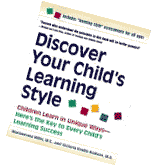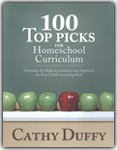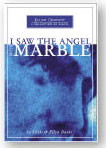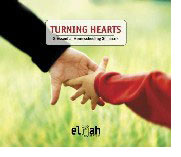 Choosing Teaching Materials, part 2 Choosing Teaching Materials, part 2
Determining how your child learns best
View past ejournals HERE>>
The school for the animals
An old story tells of the creation of a school for the animals. In this school, everybody took the same four courses: flying, swimming, climbing, and
running. Among the students were a duck, a flying squirrel, a fox, and an elephant. These four were highly motivated, and wanted to get good grades,
so they all tried very hard.
The duck did fantastically well in swimming and flying, but he lagged behind his classmates in climbing and running, so focused special attention on those
two subjects. However, his feet became so sore from trying to run and his wings were so bedraggled from trying to climb that by the end of the year he not only failed both those subjects, but made C’s in swimming and flying, which had once been his two best subjects.
At the beginning of the school year, the squirrel was first in his class in climbing and running and was second only to the duck at flying. But as the months wore on, he missed so much school from catching pneumonia in his swimming class that he failed everything. To make matters even worse,
because the squirrel constantly squirmed and chattered in class, and had difficulty paying attention, he was diagnosed with a learning disorder. The
squirrel eventually was placed in remedial classes and had to be medicated in order to continue with his school work.
The fox was a natural in his running class and scored well in climbing and swimming, but became so frustrated at his inability to get good Grades in
flying that he began assaulting his classmates. He even tried to eat the duck. His behavior was so disruptive he was expelled from school. He fell in with a
rough crowd and eventually wound up in a center for animal delinquents.
The elephant, meanwhile, developed low self-esteem because he couldn’t do
well in any of the subjects. When he sank into clinical depression, his therapist persuaded him to try a different school that focused on subjects such as lifting
and carrying. The elephant was disappointed, because careers in lifting and carrying were not as prestigious as careers in flying, swimming, climbing, or
running. Even though he always felt inferior, he managed to make a decent living and support his family.
Our Children are Individuals
The point of this silly story about a school for the animals is that modern education sends every child through a program of study that is targeted toward a “generic” child. It expects every student to be able to follow the same course of study in the same sequence, without considering innate aptitudes or individual differences that are crucial to children’s abilities to learn. Schooling does not take into account differing personality types or
temperaments.
Parents who understand learning differences can be more sympathetic with the frustrations their children face in school and more helpful in finding alternative approaches. The two major learning differences among children have to do with learning styles and learning readiness.
Conditions that affect learning
Each person has a dominant or preferred mode of receiving information. People also have different ways in which they process input, different innate aptitudes, and different temperaments. These differences in learning modalities can profoundly affect their ability to learn.
A Visual learner is one who learns best through visual images, pictures, diagrams, etc. and by watching others do something. Visual learners tend
to be print oriented and can learn by reading about a subject. Some visual learners are strictly Print learners.
Auditory learners do better with lectures, songs, stories and other oral material.
Kinesthetic learners favor interacting with what they are learning by doing and touching. Most young children are kinesthetic learners, but oftentimes boys will continue to need “hands-on” materials even when they are older.
Social or Group Interactive learners learn best through group participation, conversations, and discussion.
A child will give you clues as to which kind of a learner he is not only in his activities but also in the words he uses to express himself. If a child observes
and remembers details, likes beautiful things and bright illustrations, and tends to express himself with phrases such as “Look at this!” or “I see what you mean,” that child is probably a visual learner. If the child often sings to himself or makes up songs, can remember what people say, and uses expressions like, “Listen to this!” or “I hear what you’re saying” to mean he understands, he may be an auditory learner. The child who likes to touch everything, take things apart, and uses expressions like, “I get it” is most likely a kinesthetic learner.
In addition to one or two favored learning styles, each person has a dominant thinking style dependent on whether he or she processes information with the right or the left hemisphere of the brain. Left hemisphere thinking is sequential, analytical, rational, and interested in details. Right hemisphere thinking is “whole concept,” intuitive, subjective, and artistic.
Another component of learning is what scientists call The Seven Intelligences. Different people have various innate abilities that make certain studies easier for them. This innate aptitude may be musical, artistic, logicalmathematical, linguistic, bodily-kinesthetic, interpersonal, or intra-personal.
Linguistic Intelligence is the ability to use and understand language; Logical-Mathematical Intelligence is the ability to use numbers and math concepts.
Visual-Spacial Intelligence is the ability to understand the relationships of images and figures in space. Musical-Rhythmic Intelligence is the ability to
hear tone and pitch and to sense rhythm. Bodily-Kinesthetic Intelligence is the ability to move with grace and strength. Interpersonal Intelligence is the ability to work with other people and lead them. Intra-personal Intelligence is the ability to understand one’s own emotions, motivations, and goals.
People who have highly developed intelligence in one area may be weak in other areas.
In addition, a child’s temperament and his spiritual gifting can have a powerful influence on his ability to learn. Profound differences in people’s personalities cause them to be more receptive to certain learning environments and methods.
Determining your child’s learning preferences can be important because traditional teaching methods and materials favor the serious and deliberate temperaments, visual and auditory learners, left-brained thinkers, and linguistic and logicalmathematical intelligences.
Learning readiness
Dr. Raymond Moore was part of a task force of leading American educators who studied early childhood learning for the U. S. Office of Economic Opportunity. Based on his years of research, Dr. Moore reached two conclusions about learning readiness:
1] Many children suffer needless physical, emotional, and mental stress because they are placed in academic settings before their vision, hearing, nervous system, reasoning abilities, and muscular coordination are developed enough to complete conventional schooling tasks, and
2] Children are often taught academic skills before they have enough life experiences and background knowledge to grasp the concepts involved.
Dr. Moore and his wife, Dorothy, have since become two of America’s leading advocates of home education. They have written many books encouraging parents to delay formal education until children are mentally, physically and emotionally ready.
A comfortable learning environment
In addition to learning styles and readiness, a “student-friendly” environment is critical to learning. “Student-friendly” environments take into consideration the child’s physical and emotional surroundings. Children learn best in a positive, affirming atmosphere with enjoyable surroundings where they are physically and emotionally secure.
Many children are sensitive to lighting, to room temperature, to visual distractions such as clutter, to auditory distractions such as background noise, and to whether the seating is comfortable.
Some students work better alone, while others do their best work when other people are involved.
Children are also sensitive to their teacher’s attitudes toward them. Children who are expected to fail often do poorly in school, while children who are expected to succeed generally are better learners. Observant parents can create a physical and emotional environment in which each child does his or her best work.
Until next time....
Be sure to sign up for our ejournal! Sign up below.
View past ejournals HERE>>
Resources to discover how your child learns best
 Developed by the authors of Discover Your Child's Learning Style, this is the most powerful and user friendly learning styles inventory in the world and it is NOW ONLINE! A Self-Portrait™ Profile assesses several aspects of learning style, quickly and simply, in language that is easily understood by everyone. These aspects are: Disposition, Modality, Environment, Interests, and Talents. If you want help in understanding what makes your child "tick" and how your can help him or her learn easier and better (or find out more about yourself), take this easy, quick learning styles assessment test. For more about this learning styles assessment test, CLICK HERE>> Developed by the authors of Discover Your Child's Learning Style, this is the most powerful and user friendly learning styles inventory in the world and it is NOW ONLINE! A Self-Portrait™ Profile assesses several aspects of learning style, quickly and simply, in language that is easily understood by everyone. These aspects are: Disposition, Modality, Environment, Interests, and Talents. If you want help in understanding what makes your child "tick" and how your can help him or her learn easier and better (or find out more about yourself), take this easy, quick learning styles assessment test. For more about this learning styles assessment test, CLICK HERE>>
 Discover Your Child's Learning Style is a book you need. Period. It has more potential to improve your child's education - and your family relationships - than almost any other book I have ever read. The authors of this book have developed a "Learning Styles Model" of education that helps you discern your child's: Discover Your Child's Learning Style is a book you need. Period. It has more potential to improve your child's education - and your family relationships - than almost any other book I have ever read. The authors of this book have developed a "Learning Styles Model" of education that helps you discern your child's:
• Talents
• Interests
• Preferred learning environment
• Thinking Style
• Modalities
The book includes handy self-tests. Use these to find out just how each child in your family loves to learn... and what teaching approaches help or hinder his learning style. What a huge difference this will make in your homeschool... and in your family relationships!
 Discover Your Children's Gifts will help you uncover your children's natural giftings and personality traits. It helps explain why their personality "quirks" are really evidences of their own God-given gifts. The theological foundation is very sound, making good sense of the main passages on spiritual gifts in a way very few others do. Gifts are broken into 1) Manifestation (sign gifts - 1 Cor 12-14; Acts 2) 2) Ministry (equipping gifts - Eph 4) & 3) Motivational (every-Christian-gifts - Rom 12). Discover Your Children's Gifts will help you uncover your children's natural giftings and personality traits. It helps explain why their personality "quirks" are really evidences of their own God-given gifts. The theological foundation is very sound, making good sense of the main passages on spiritual gifts in a way very few others do. Gifts are broken into 1) Manifestation (sign gifts - 1 Cor 12-14; Acts 2) 2) Ministry (equipping gifts - Eph 4) & 3) Motivational (every-Christian-gifts - Rom 12).
 Dreamers, Discoverers and Dynamos. Every now and then a book comes along that fills in so many gaps in my understanding that I want to tell everyone about it. Dr. Pallodino suggests that one in five children is an "Edison Trait child," meaning he or she has one or more of the following: dazzling intelligence, an active imagination, a free-spirited approach to life, and the ability to frustrate the you-know-what out of others. The heart of the issue is that these children think divergently, while schools generally reward convergent thinking. This book discusses the different types of approaches to life your children may have (dreamer, discover, or dynamo) and how you can most help each type succeed. Dreamers, Discoverers and Dynamos. Every now and then a book comes along that fills in so many gaps in my understanding that I want to tell everyone about it. Dr. Pallodino suggests that one in five children is an "Edison Trait child," meaning he or she has one or more of the following: dazzling intelligence, an active imagination, a free-spirited approach to life, and the ability to frustrate the you-know-what out of others. The heart of the issue is that these children think divergently, while schools generally reward convergent thinking. This book discusses the different types of approaches to life your children may have (dreamer, discover, or dynamo) and how you can most help each type succeed.
 100 Top Picks for Homeschool Curriculum by Cathy Duffy. I've always recommended Cathy's curriculum guides as the best out there for choosing teaching materials that "mesh" with who your family is. Now Cathy guides you through the process, offering her "Top Picks" from each subject area. 100 Top Picks for Homeschool Curriculum by Cathy Duffy. I've always recommended Cathy's curriculum guides as the best out there for choosing teaching materials that "mesh" with who your family is. Now Cathy guides you through the process, offering her "Top Picks" from each subject area.
A major feature of 100 Top Picks is the charts showing the 100 Top Picks in relation to educational approaches, learning styles, and practical features such as prep time needed; design for independent, one-on-one, or group learning; and ease of use for the teacher. Complete reviews of each of the Top Picks provide parents the information they need to make the best choices for each of their children.
The first half of 100 Top Picks covers information that will help you decide your child's learning styles, help you decide what your "Philosophy of Education" is, and help you figure what to teach when. The second half has reviews for all 100 of the top picks. You will gain a lot of insight into what curriculum is available by reading these reviews. She even tosses some extra "Picks" here and there that would've made the list if her book's title was "200 Top Picks".
Any article appearing on this website may be copied or forwarded electronically provided that proper credit is given and that the article is not substantively modified.
No article may appear in whole or in part in a publication sold for profit or as part of any commercial endeavor without the written consent of Home School Marketplace.
© Copyright 2006. Home School Marketplace, 1053 Eldridge Loop, Crossville, TN 38571.
|
What kind of learning disposition does your child have?
Choose one:
1. Likes learning activities that are short or like games.
2. Likes using workbooks or doing timed drills.
3. Likes learning centers, labs, or field trips.
4. Likes to work in small groups or do projects with others.
5. Likes activities that allow him or her to use imagination and/or creative thinking.
If you chose:
#1: You may have a child with a Performing Disposition. Since staying focused on material that you are not interested in is difficult for you, having 10-20 minutes of instruction or study followed by 20 minutes of "processing time" is very important. When doing homework or any kind of lesson or study, frequent breaks are necessary. People with a Performing Disposition are probably the most misunderstood in traditional classroom and work settings. They usually need to move frequently and they learn better if they can "experience" the lesson. They are often labeled hyperactive or A.D.H.D. (attention deficit hyperactive disorder).
#2: You may have child with a Producing Disposition. You are likely to enjoy being focused for long periods of time. You probably don't mind sitting at a desk, taking instruction, keeping schedules, and doing exactly what you are asked to do. Clear explanations, guidelines, and due dates are very important since you need to be able to plan ahead and keep things organized. Producing people are usually "ideal" students and employees.
#3: You may have a child with an Inventing Disposition. You don’t mind being focused for long periods of time as long as it is your own project. In fact, when you are working on a project of interest, you are likely to lose track of time and resent it when you are interrupted or asked to stop working. Inventing people need to set aside time to do things that "must" be done—that they don't enjoy doing,—so that they have lots of "open ended" free time to pursue their own projects. In classroom situations, these people are frequently labeled A.D.D. (attention deficit disorder).
#4: You may have a child with a Relating-Inspiring Disposition. Everything you do is more enjoyable and easier to do if you can work with others—in a small group or with another person. The interaction with other people, the discussion, the group problem solving, and sense of cooperation keep you interested and participating in the learning process. Many of these people are Auditory-Verbal Learners, needing to talk things out and discuss in order to understand and retain information.
#5: You may have a child with a Thinking-Creating Disposition. People may say that you are a "daydreamer" or that you are unfocused." Wonder and imagination—seeing things in a new way—keep you interested and participating in the learning process. You are probably a Visual-Picture Learner and possibly a Hands-On or Sketching Learner. Doodling or drawing could facilitate comprehension and writing. The ideas of Thinking-Creating people can seem "off the wall" or unrelated to the subject. These students are also often labeled A.D.D.
Recommendations

The Pride Financial Network Stock and Options Home Study Program
I keep encouraging you to at least check this program out because of the time critical issue mentioned below and also because I know it works. For a limited time, Chris Verhaegh is offering his home study program at a special price and with a special extended guarantee. Find out more about it HERE>>
If you've ever thought about learning to invest in the stock market, do it now. Find out why this is TIME CRITICAL HERE>>
Home School Resources
Notebooking! Yes! You CAN Be a Binder Queen! Cindy Rushton is the "queen" of education through notebooking and uses notebooking for EVERYTHING! In this resource, she teaches you how to create "notebooks" around each course of study, whether you're working with a toddler or a high-schooler, pouring out all her ideas and tips for heling your children deepen their studies and document learning all along the way. Cindy addresses many of the tough questions that many of us face in a way that will make it easy to for you to apply these ideas TODAY!. Special offer: 30% off! This is the 2005 version that normally sells for $20, but you can get it now for $14.
Books and CDs by the Elijah Company. We have closed down the Elijah company mail-order store, but Home School Marketplace carries many of the products by Chris and Ellyn Davis as well as products we published for others. Here are just a few of our best-sellers.
30% off WIN books

We have the following WIN books available: The Reluctant Writer,
Comprehensive Story Writing,
Writing Man 1 & 2, WIN Twin, and
Expository Writing Handbook.
For more information and to place an order, FIND OUT MORE HERE>>
I Saw the Angel in the Marble

With over 4,000 copies sold in just a few months, I Saw the Angel in the Marble is becoming a home schooling best seller!
This book represents the best of 15 years of Elijah Company articles. Find our more about it HERE>>
Davis Seminar Set (8 CDs)

The Best of Chris and Ellyn Davis, this set contains seminars given by Chris and Ellyn Davis of The Elijah Company at home schooling conventions. The set contains all of the favorites that home schoolers ask for over and over.
People have told us this set of CDs changed their lives. Find out more about them HERE>>
Angel in the Marble/
Davis Seminars Set
Order a combination of I Saw the Angel in the Marble and the Davis Seminars CDs HERE>>
From Home School to Home Business
(14 CD Set)

If you missed one of our From Home School to Home Business Conferences, you missed a great time.People who have attended tell us that it changed their lives—not only in the area of home schooling, but also in the area of creating their own sources of home income.This set is huge and filled with useful and encouraging information about how to be successful at home schooling and at home business! Find out more about this life-changing set of CDs HERE>>
Be sure to sign up for our ejournal!
Sign up below.
View past ejournals HERE>>
|
